Summer traffic on Martha’s Vineyard is causing significant headaches for people who visit and live here, according to the results of a Vineyard Gazette survey, with seven out of 10 respondents saying they avoid shopping in towns in July and August because of congestion.
The online survey, designed to gauge the impact of traffic on the Island’s quality of life, elicited a variety of reactions, but most agreed that surging summer traffic had negatively affected their enjoyment of Martha’s Vineyard. As to what should be done, no clear consensus emerged.
“Time delays, taking alternate routes, having to avoid even trying to go to favorite places, noise pollution, air pollution, stress — degradation of the Island’s former beauty and peacefulness are nearly complete in July/August and the season gets longer every year,” wrote one respondent.
“We do not have the infrastructure to handle so many cars and if we build the infrastructure we lose the quaintness of Martha’s Vineyard. We have the VTA and bike paths. We need less cars and less building. More homes equals more cars,” another wrote.
“There’s nothing quaint about putting our safety at risk or idling in cars for 45 minutes to get through an intersection. We need bike paths that bikers will actually use. We need stop lights, lots of them, and quickly. We need to address the most absurd of our intersections,” said a third respondent.
Part of the Vineyard Gazette’s Community Surveys Project, the survey went live online on August 1 and was closed on August 20 after 2,200 responses were received. Though not a scientific sample, efforts were made to reach a broad audience and to block multiple responses from the same computer. Individual responses were kept anonymous.
Some 71 per cent of those responding said they are homeowners, and 36 per cent rely on a motor vehicle to get to a job or make a living on Martha’s Vineyard. Just under half of all respondents have spent more than 30 summers here. However, the range of responses was fairly consistent across all subgroups.
For example, 64 per cent of all respondents said there are too many vehicles on Martha’s Vineyard during July and August. Among longtime residents, that figure rose to 68 per cent. And 72 per cent of people who rely on a vehicle for work say there are too many cars on the Island in the summer. Of the 2,200 respondents, 30 said they had personally been involved in a motor vehicle accident and 85 per cent said they’d been stuck in traffic for long periods of time.
About a quarter of respondents said Island traffic was bad, but not unmanageable, with many remarking that the inconvenience is short-lived and not as troublesome as other places on the mainland.
“Compared to living near any mid- to large-sized city, it is a very minimal problem. It takes a few extra minutes to get anywhere, not hours,” said one. “Islanders need to make a living in the summer and visitors are required for them to do so.”
Perhaps the most surprising finding from the survey was the extent to which people said they have changed their behavior in recent years because of vehicle traffic.
Asked whether there were activities they had “consciously opted not to do” because of summer traffic, 70 per cent of all respondents cited shopping in the downtowns, 50 per cent said going out to restaurants, 40 per cent said riding a bicycle on Island roads and 32 per cent said going to the beach.
“It’s not just an issue with traffic, but also parking,” said one respondent. “There are only so many spaces to park and with more cars it makes it impossible to find a spot, especially for work.”
The Triangle in Edgartown was cited as the biggest problem area, followed closely by Five Corners in Vineyard Haven and the intersection of State Road and the Edgartown-Vineyard Haven Road. There were scattered concerns about the Roundabout, but it mostly drew praise. Many respondents commented that Island roads are insufficient to the current volume of traffic in the summer, but while some proposed various traffic management solutions, including the addition of stop lights, more roundabouts, turning lanes and traffic police, others supported more radical measures.
“There is a need to think outside the box. Like closing the downtowns to cars and have parking away from towns and a free shuttle. Vehicles must have a permit to get a ferry reservation. Islanders get them easily, followed by homeowners and longer-term leases and then day trippers,” offered one respondent.
“Increasing the bike paths to cover the entire Island would make a huge difference. Too few locations are accessible by bike paths and the roads are incredibly dangerous for cyclists,” suggested another. “Citi-Bike-type concessions could be introduced at the ferry terminals (and other locations).”
Fifty-seven per cent of respondents said they would support efforts to restrict the number of vehicles on Island during July and August, while 22 per cent said they would not. Twenty-one per cent were undecided.
Four out of 10 respondents said they would support limits on the number of cars carried by the Steamship Authority and a similar number supported imposing a surcharge on people who bring more than one car to the Island. Increasing rates for car travel on ferries, whether for all people or just for non-residents, was less popular. Several people suggested imposing a surcharge on larger vehicles.
“Could giant SUVS be restricted in any way or charged a higher price on the ferry? People who drive them don’t seem to be able to park them. Traffic is held up big time while they try to get into a space that is not big enough,” one said.
Many respondents said expanding and subsidizing the Island’s bus system could reduce car traffic on the Island. Others suggested that free or reduced-cost parking in Woods Hole would encourage people to leave their cars on the mainland. Many respondents called for a further crackdown on mopeds and more bike lanes. A few called for better visitor education.
“Visiting cars, bikes and walkers seem oblivious of rules of the road, walking in the middle of the road, biking three abreast, but especially bikers that ride against traffic,” said one respondent.
Many commenters noted that traffic is simply one symptom of larger issues, brought on by the ever-growing popularity of the Vineyard.
“Affordable housing, clean waters, access to recreation and beaches, better public school facilities, an efficient regional police and fire department are among the Vineyard’s real problems,” said one. “Traffic for a few weeks pales in comparison.”
Added another, “If you build it, they will come. How many more can the Island take? And if you improve infrastructure to accommodate them, when will it end? More restaurants, concerts, casinos, etc. lead to more visitors, which leads to more traffic, which encourages more restaurants, etc ... all the while worsening the housing shortage for restaurant, etc., workers."

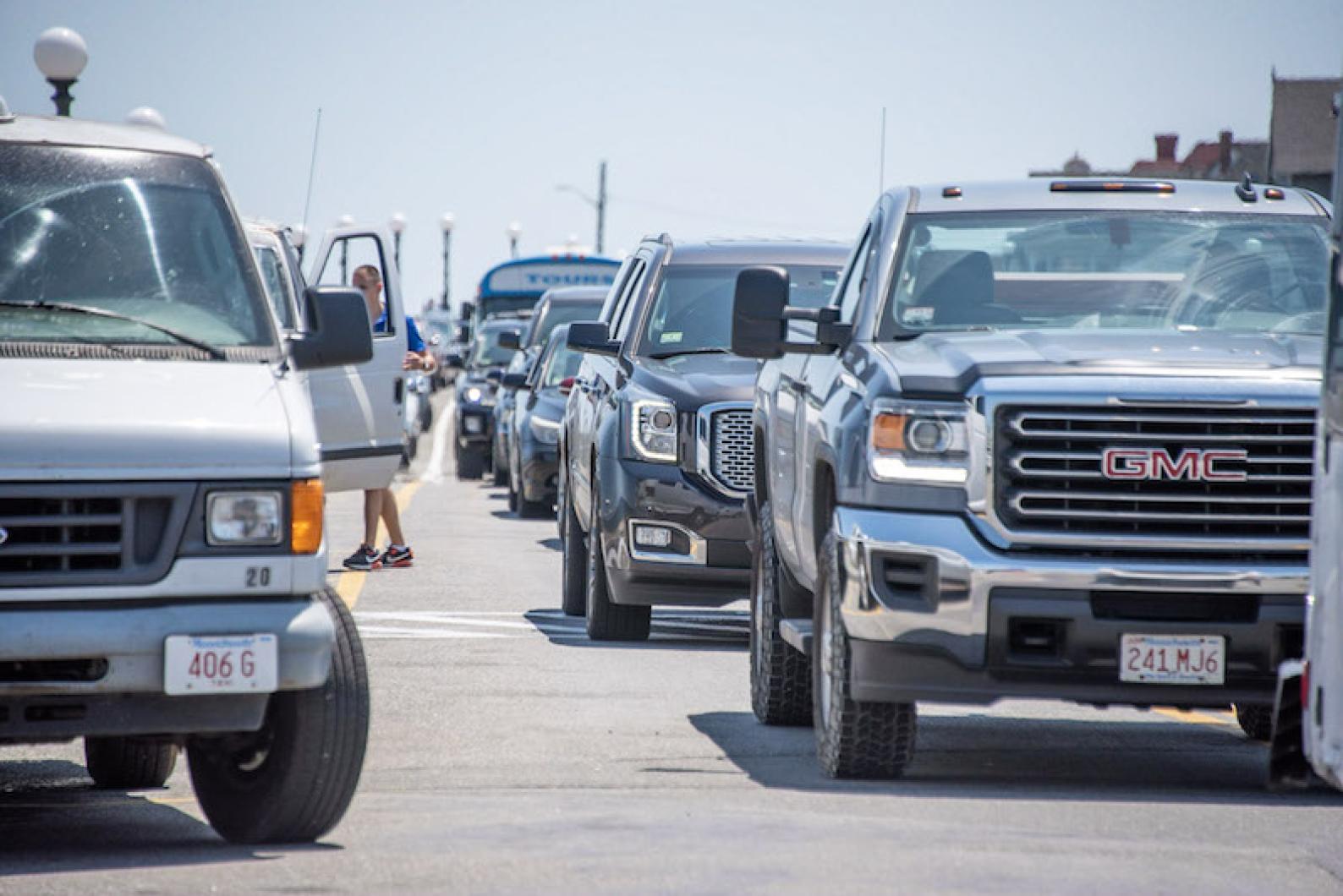
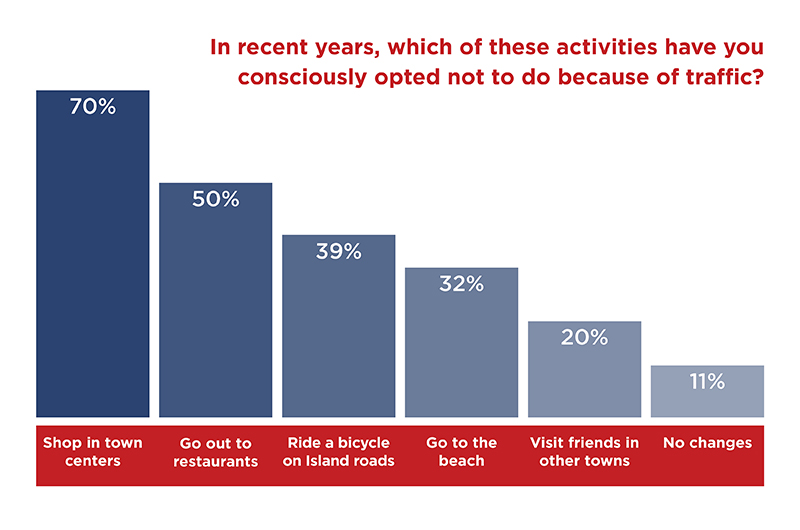
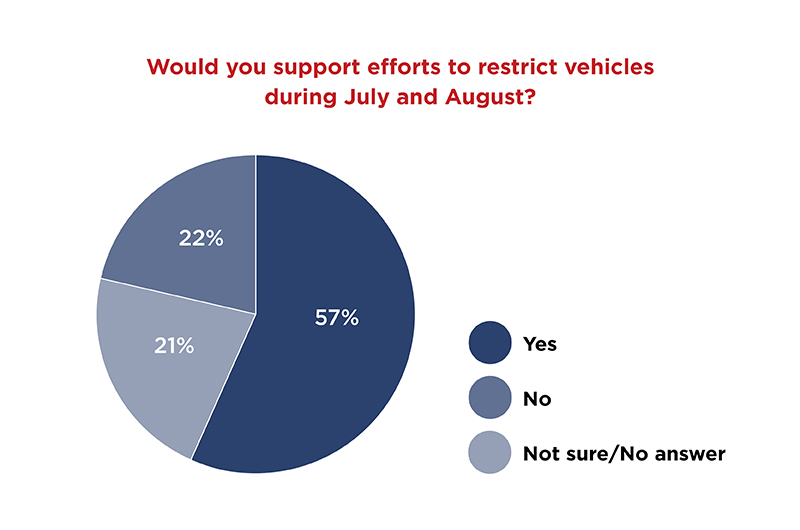
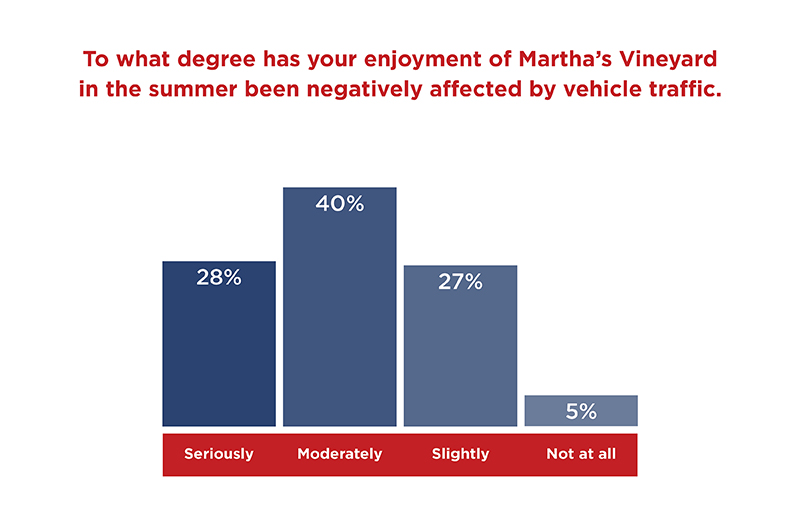
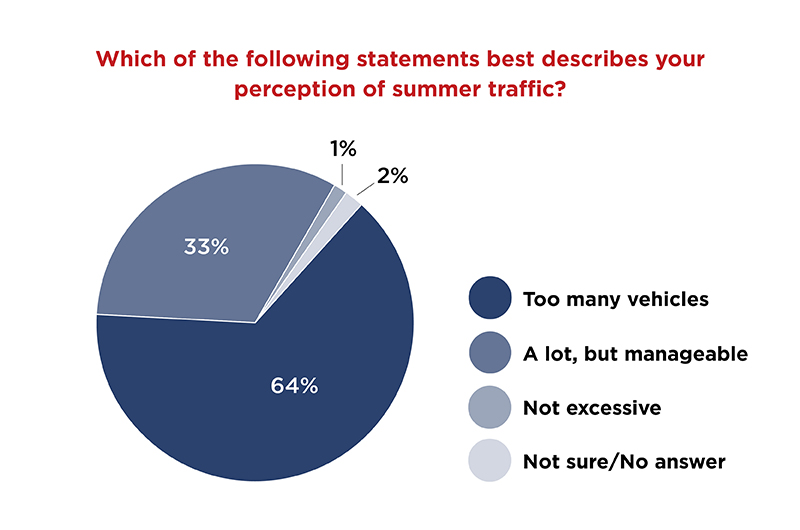




Comments (38)
Comments
Comment policy »